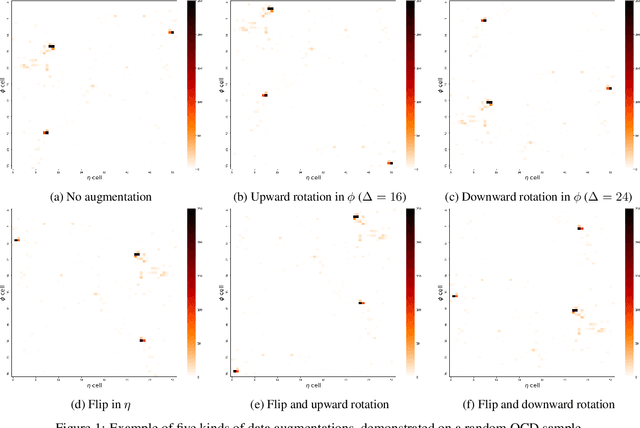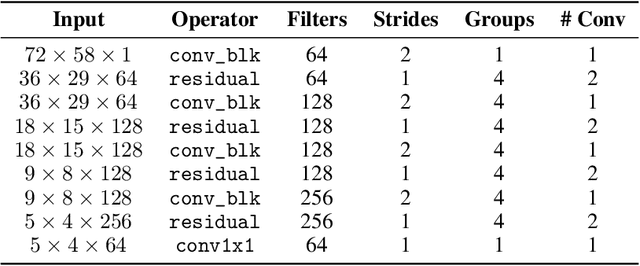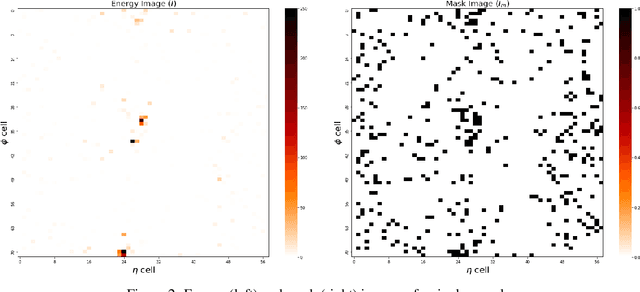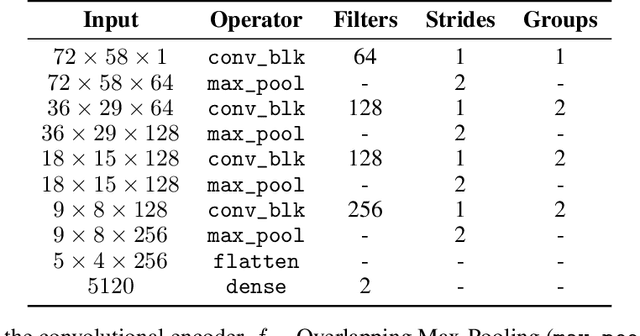Simranjit Singh Chhibra
Autoencoders for Real-Time SUEP Detection
Jun 26, 2023Abstract:Confining dark sectors with pseudo-conformal dynamics can produce Soft Unclustered Energy Patterns, or SUEPs, at the Large Hadron Collider: the production of dark quarks in proton-proton collisions leading to a dark shower and the high-multiplicity production of dark hadrons. The final experimental signature is spherically-symmetric energy deposits by an anomalously large number of soft Standard Model particles with a transverse energy of a few hundred MeV. The dominant background for the SUEP search, if it gets produced via gluon-gluon fusion, is multi-jet QCD events. We have developed a deep learning-based Anomaly Detection technique to reject QCD jets and identify any anomalous signature, including SUEP, in real-time in the High-Level Trigger system of the Compact Muon Solenoid experiment at the Large Hadron Collider. A deep convolutional neural autoencoder network has been trained using QCD events by taking transverse energy deposits in the inner tracker, electromagnetic calorimeter, and hadron calorimeter sub-detectors as 3-channel image data. To tackle the biggest challenge of the task, due to the sparse nature of the data: only ~0.5% of the total ~300 k image pixels have non-zero values, a non-standard loss function, the inverse of the so-called Dice Loss, has been exploited. The trained autoencoder with learned spatial features of QCD jets can detect 40% of the SUEP events, with a QCD event mistagging rate as low as 2%. The model inference time has been measured using the Intel CoreTM i5-9600KF processor and found to be ~20 ms, which perfectly satisfies the High-Level Trigger system's latency of O(100) ms. Given the virtue of the unsupervised learning of the autoencoders, the trained model can be applied to any new physics model that predicts an experimental signature anomalous to QCD jets.
Triggering Dark Showers with Conditional Dual Auto-Encoders
Jun 22, 2023



Abstract:Auto-encoders (AEs) have the potential to be effective and generic tools for new physics searches at colliders, requiring little to no model-dependent assumptions. New hypothetical physics signals can be considered anomalies that deviate from the well-known background processes generally expected to describe the whole dataset. We present a search formulated as an anomaly detection (AD) problem, using an AE to define a criterion to decide about the physics nature of an event. In this work, we perform an AD search for manifestations of a dark version of strong force using raw detector images, which are large and very sparse, without leveraging any physics-based pre-processing or assumption on the signals. We propose a dual-encoder design which can learn a compact latent space through conditioning. In the context of multiple AD metrics, we present a clear improvement over competitive baselines and prior approaches. It is the first time that an AE is shown to exhibit excellent discrimination against multiple dark shower models, illustrating the suitability of this method as a performant, model-independent algorithm to deploy, e.g., in the trigger stage of LHC experiments such as ATLAS and CMS.
 Add to Chrome
Add to Chrome Add to Firefox
Add to Firefox Add to Edge
Add to Edge